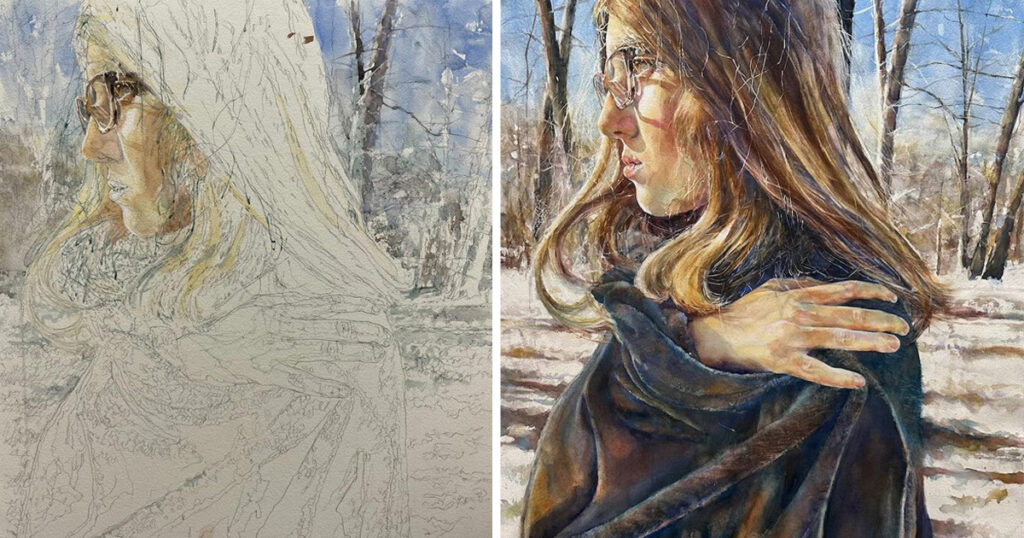Building a Painting Through Tonal Progressions


Randall Orwig (oil, 12×10)
I’ve always felt that the best art combines clarity of thought with depth of feeling. A classic, whether it’s a master painting, a brilliant symphony or a grand building, brings together refinement and power, precision and intensity. To try to imbue my paintings with these classic qualities, I’ve spent years practicing a painting method best described as “form painting.” It involves precisely seeing the distribution of light over a particular shape and then painting tonal progressions to mimic it.
To do this, I mix individual colors with a brush on the palette and apply them to imitate the changes of light and shade that I see on the actual object. Accordingly, form painting is the result of breaking free from conventional ways of seeing that are based on symbolic preconceptions, and instead documenting what the eyes are actually seeing. It’s quite literally learning to see the light.
In this way, form painting is a “window shade” technique: Each section builds from another, and the painting slowly reveals itself as if a window shade were being drawn up to expose the scene hidden behind it. This approach necessitates careful control of value and color. For this reason, I work with an extended palette and my focus is on the actual colors of the object.
Conscious of the fact that each part of each shape has its own tonal progression, I work dark to light, wet-into-wet. Furthermore, I paint each section in two layers. The initial layer is somewhat generalized and slightly dark. While that’s still wet, I brush in the lights. In the process of working up to the lights, the shape of the object—its form—is developed to its final resolution, and the light is adjusted so that it shines to the proper degree.
To become skilled at form painting, I had to learn (among other things) to paint subtle tonal progressions. No part of the body is flat, and every form has a constantly changing value progression on its surface. One of the ideal ways to practice this is to paint a sphere. It’s the simplest and most perfect example of roundness, an ideal way to study a broad tonal progression within one object.
The Function of Form: 5-Step Demo

1. A Shot of Color
In my painting process, I attempt to bring the two separate principles of color and drawing together in such a way as to maintain the purity and strength of each. For color, I begin by executing a poster study. “Poster” is the term used to describe the light in the space of a painting. Accordingly, the poster study is a snapshot of the light that fills the composition. I painted this poster study on a 5×7 canvas board.

2. Brushing In
Next I moved to the canvas and used a small bristle filbert brush and raw umber to draw in the composition. In this case I worked on a 12×10, double oil-primed, medium-smooth linen canvas. Before starting I toned the canvas with a thin mixture of solvent, ivory black and raw umber.

3. Beginning to Form
After the drawing dried, I began to paint, employing the form-painting method. Form painting is a finish-as-you-go technique, so I first painted and finished the background, then the hat, then the clothing and neck. Once these sections were completed, I started on the face. I wasn’t concerned about achieving much detail, so I painted quickly and broadly with a bristle filbert.

4. Refining Detail
Once the general forms of the face were painted in, I finished the eyes, then the nose, then the mouth and beard. Because these sections involved minute detail, I switched to an assortment of small, nylon round brushes. I used Raphael 869 Nos. 2, 4, 6 and 8, and Winsor & Newton University Nos. 1 and 2.

5. Completion
In this final stage, I painted and finished the details of the cheeks, forehead and eyebrows. Despite the fact that the form method involves finishing each section of a painting at a time, occasionally there’s a need to rework an area. In this case I reworked the beard and chin, and I gave the underside of the hat a thin second coat to finish Randall Orwig (oil, 12×10).
When not painting in his studio in Santa Fe, New Mexico, Anthony Rider teaches at the Andreeva Portrait Academy in Santa Fe and at Studio Escalier in France. For a listing of his workshops and to see more of his artwork, visit his Web site at www.tonyryder.com.
Click here to read the rest of “In Peak Form” from the April 2006 issue of The Artist’s Magazine.
MORE RESOURCES FOR ARTISTS
• Watch art workshops on demand at ArtistsNetwork.TV
• Online seminars for fine artists
• Instantly download fine art magazines, books, videos & more
• Sign up for your Artist’s Network email newsletter & receive a FREE ebook





Have a technical question?
Contact UsJoin the Conversation!